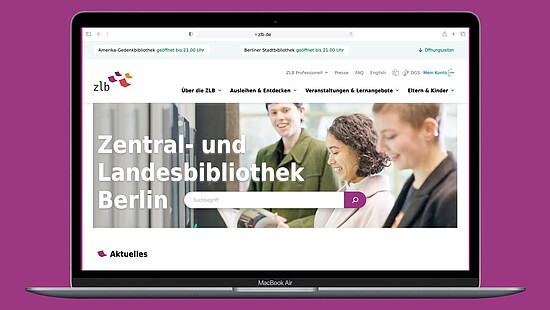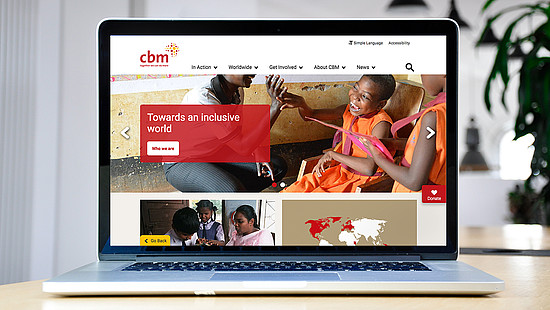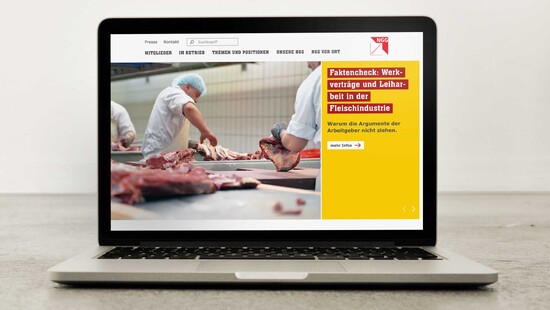What you should know about the Barrier-Free Accessibility Reinforcement Act.
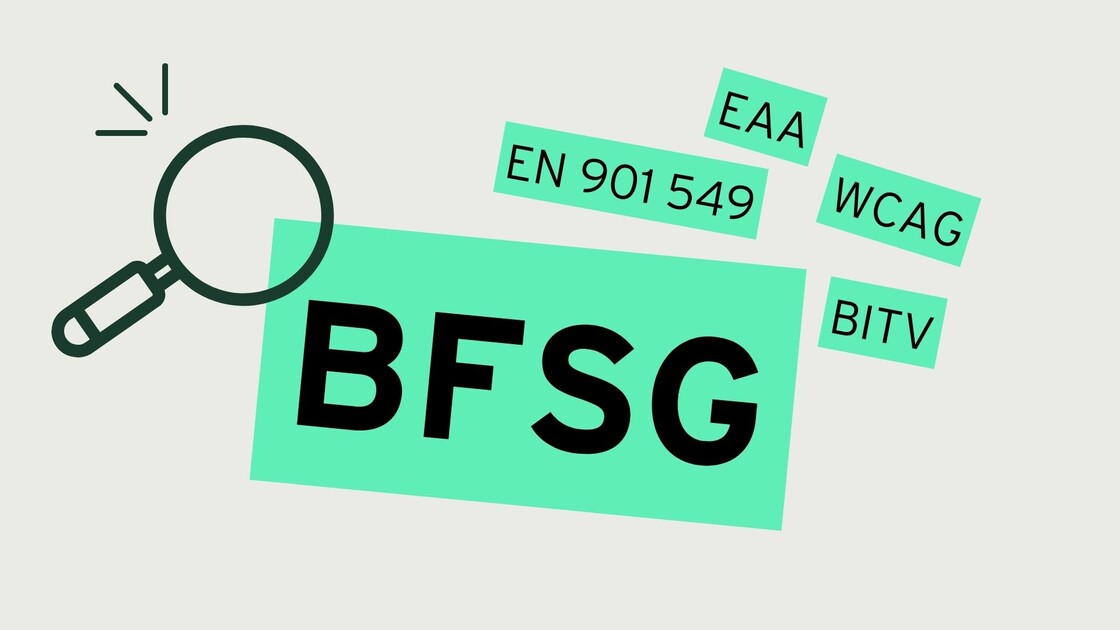
Many of our customers have been dealing with the issue of accessibility for years. According to the Barrier-free Information Technology Ordinance (BITV), latest version 2.0 from 2019, information provided by public bodies is already obliged to ensure that information on websites is made accessible to people with disabilities without barriers.
The BITV obliges federal and state authorities, public bodies, local authorities such as cities, municipalities or districts, as well as companies that are at least 50% publicly owned or provide digital services on their behalf. The first version of the BITV dates back to 2002 and is based on the Disability Equality Act (BGG) of the same year.
Who does the Accessibility Improvement Act apply to?
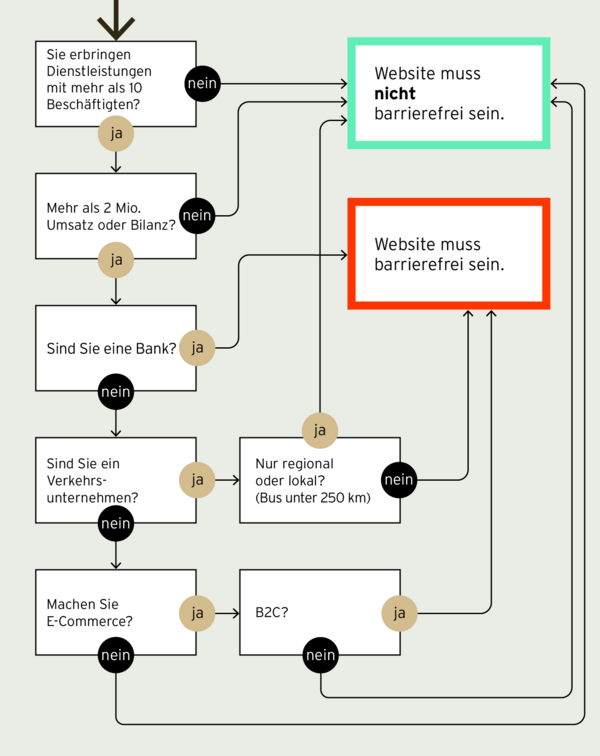
Questionnaire Barrier-Free Accessibility Reinforcement Act (German Version)
The BFSG extends the requirements for digital offerings to products and services from companies that were previously not covered by the BITV. This means that the majority of other offerings are to be made accessible, especially those that are accessible as part of online e-commerce offerings on the internet or as terminals, e.g. Operators of publicly accessible websites, e-commerce platforms, company websites with online shops in the business-to-consumer sector and fee-based educational services; the law explicitly mentions online banking, passenger transport services, telecommunications services, online appointment bookings or even products, i.e. devices such as computers, ATMs, e-books or ticket machines or similar.
Who is exempted?
Pursuant to Section 3 (3) BFSG, micro-enterprises in the service sector are exempt from the accessibility requirements. Micro-enterprises are defined as companies with fewer than 10 employees and an annual turnover or annual balance sheet total of no more than EUR 2 million. Companies in the business-to-business (B2B) sector and passenger transport services that do not operate nationwide are also exempt.
But why look for exceptions? With 7.8 million people in Germany and a share of 9.4 per cent of the total population, the target group of people with severe disabilities is large enough to attract the interest of e-commerce providers. Many of the requirements are also useful for the majority of readers who, in an ageing society, want to participate in the information on offer in media that are no longer quite so new.
What about information services?
Private users, non-profit organisations, foundations, associations or trade unions that only provide information online are still not legally obliged to do so. However, if shop offers, registrations for paid events or donation forms are integrated or if you generate advertising revenue as an influential influencer with a blog, then this could already constitute an obligation.
But aren't there also moral aspects in addition to monetary objectives, which are nevertheless the focus of EU internal market harmonisation?
Why do we support the design of accessible websites?
We are committed to the idea of an inclusive society. Digital information services, which we have been developing for over 20 years, are part of our drive. We want to make our customers' great online portals accessible to everyone. This information is part of freedom of information, because access to information is the basis for freedom of expression and this access, this participation must be possible for all people. These ideals were already at our side when wegewerk was founded.
European and international harmonisation
The rules and requirements are standardised for Europe. What the GDPR is to data protection, is the European Accessibility Act, EAA, to accessibility. While the European Accessibility Act formulates the legal requirements, the European standard EN 301 549 specifies the concrete requirements. It includes the specific details for websites, software and documents, such as accessible PDFs.
In turn, the European standard is based on the international standard, the Web Content Accessibility Guidelines. The WCAG were compiled by international organisations as part of the standardisation processes of the World Wide Web Consortium (W3C). The genesis of the WCAG dates back to the 1990s - WCAG 1.0 from 1999 - and will reach the current version 2.2 in October 2023, which therefore also forms the basis for the BFSG.
What are the technical requirements for the Accessibility Reinforcement Act?
The Barrier-Free Accessibility Reinforcement Act is also based on the WCAG 2.2 requirements, in contrast to BITV 2.0, which still refers to WCAG 2.1. The requirements are fundamentally based on the four principles of perceptibility, usability, comprehensibility and robustness. The latter refers to the usability of completely different devices, be it the standard browsers on desktop computers, mobile devices or even assistive technologies that help with input.
The principles are followed by 13 guidelines which, as the name suggests, set the direction and describe the goal. Even if some people would like to orientate themselves on DIN standards, there is a lot of technical leeway for implementation: the criteria are divided into three levels of conformity: A (minimum accessibility), AA (adequate accessibility) and AAA (high accessibility).
The BFSG now makes compliance with the WCAG A plus AA criteria (current version 2.2) mandatory.
These can be very basic requirements, such as providing non-textual content such as images, graphics or videos with textual alternatives, offering an audio subscription for multimedia content or making the website usable with the mouse. To do this, the content must be structurally well organised so that it can be scrolled through using assistive input devices. Higher contrast values of text on surfaces is also something that we would categorise as a matter of course.
At level AA, there are additional comprehensible requirements, such as higher contrast values, switchable modes, scalable text sizes, descriptive elements, alternative navigation options and more advanced subtitling, e.g. for live video broadcasts. Even if the latter can be seen as a challenge, with AI support the requirement is no longer a problem.
However, sign language, which is often formulated as an excessive requirement for companies, is only a requirement at level AAA of the WCAG.
Conclusion
With this article, I hope to have provided an overview of the legal and technical requirements and thus opened up an insight into the black box of "accessibility". The text provides the necessary answers as to whether your own website needs to be accessible. It is important to approach the topic of accessibility and not to categorise it as insurmountable. Although technically formulated, the requirements are all too human and should be taken into account by people with and without disabilities.
Let us advise you or reassure you.
Further information on the Barrier-free Information Technology Ordinance (BITV) can be found in our blog post. How can you make an event accessible? Find out more in our article.
